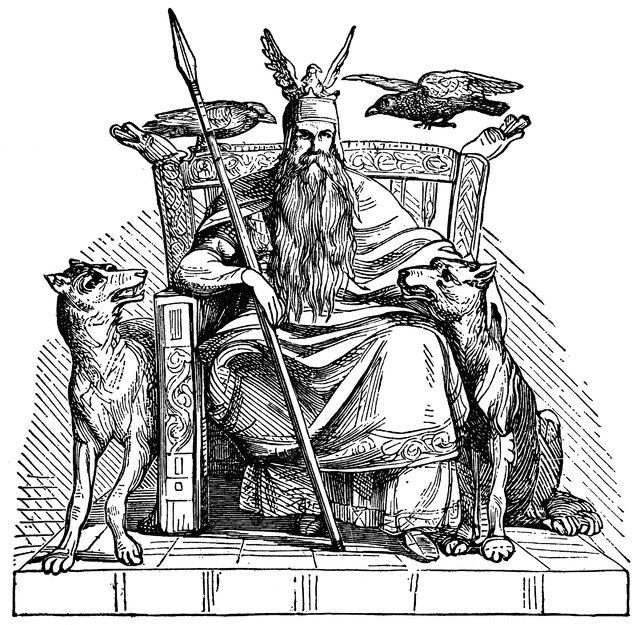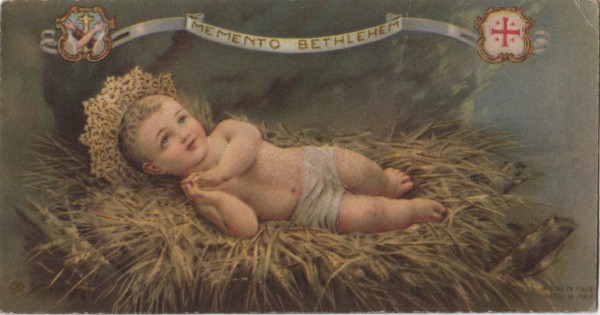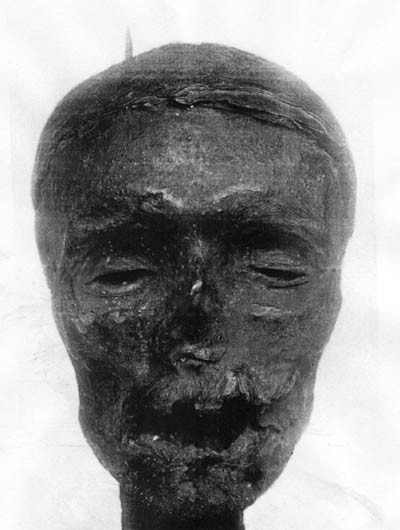As always (a tad late this year,) we here at ACME want to help spread hope, peace, joy, and other marketing buzzwords
Hopefully you haven't overeaten this Christmas, but if you have, perhaps you'll get a visit from -
( Remember, it isn't really Christmas until you hear his Hidey Ho.)
Your Christmas gifts are starting to arrive (we'll be keeping a count.)
(Remember, we are going to count this as a unit and not as two individual gifts.)
Put your feet up and read a little bit about the History of Christmas
Christmas is one of the most widely celebrated holidays in the world, although the form of its observation varies widely from nation to nation. In America, our cultural kleptomania has allowed us to assimilate the most enjoyable of those traditions while discarding any stupid superstitions associated with them.
But it's worth reviewing those superstitions along with our traditions, if only to amuse ourselves yet again at the expense of our ancestors.
The winter solstice had long been celebrated by ignorant barbarians throughout the northern hemisphere as the time of the year when the sun stopped getting smaller and smaller and finally started getting bigger and bigger. The sun was important to these poor primitive bastards, in much the same way that we poor modern bastards find it so important. It was, after all, the sun.
To avoid having to go out much during the darkest and coldest days of the year, the poor shivering Nordic bastards of Scandinavia would bundle up and sally forth into the woods to bring home great big logs which would often burn for as long as twelve days. As long as the log burned they would stay in and eat and drink and fornicate. They believed that every spark their log set off foretold the birth of a calf or pig in the new year, which only underscores the irony of the Nobel prize being awarded in Sweden.
They believed the sun was a big wheel (hwoel) that rolled away from the earth until the winter solstice, at which point it began rolling back toward us. This quaint ignorance charmed the weak and flabby peoples over whom the Vikings later swept like an apocalyptic affliction. However, these peoples could not pronounce hwoel and therefore called it "yule." This irritated the Vikings and eventually forced their retreat.
While the Norse were hauling those logs into their houses, others throughout Europe were enjoying some of the finest dining of the year. Since it was too expensive to feed and shelter animals through the cold weather, those in northern climes killed their livestock at the onset of each winter. This provided their only steady supply of fresh meat all year, and went nicely with the wines and ales which had finally become fermented. The inevitable gastrointestinal distress that followed these binges is probably responsible for the primitive Germans' fear that the god Odin was flying around the sky above them during the solstice, deciding who was naughty and who was nice. It was not entirely academic: Odin's invariable sentence for the naughty was death.
Peasants everywhere also liked to bring sprigs and boughs of evergreens into their homes around the time of the solstice to remind themselves that sooner or later all that awful cold and snow would end and it would get warm enough to eat, drink, and fornicate outdoors. The Druids of the British Isles brought evergreen boughs into their temples every winter as a sign of everlasting life, and the Vikings thought that evergreens were the particular plant of their own sun-god, Balder (so-named because they mistook the sun for his shiny, hairless cranium). Even the Egyptians worshiped their sun-god Ra's "recovery" by bringing palm rushes into their homes. It's not clear how this was intended to help poor Ra, but he always pulled through.
In ancient Rome, the festival of Saturnalia began the week before the solstice and lasted a full month. Romans ate and drank and fornicated during this festival in honor of Saturn, the god of Agriculture. They filled their homes with evergreen boughs to remind themselves that everything would be green again eventually. They also let slaves become masters for the duration of the festival, and the plebeians were put in charge of the city. It was a crazy, topsy-turvy time, with all sorts of nutty mix-ups. Overlapping with Saturnalia around the time of the solstice was Juvenalia, a feast to honor the children of the city.
The winter solstice fell on December 25 in the year 274, and the pagan Roman Emperor Aurelian declared that day a holiday: the festival of the birth of the Invincible Sun. The Invincible Sun was also known as Mithra. Mithra was an infant god who had been born from a rock (presumably virgin rock). The Roman upper classes, with their special fondness for rocks, honored this holiday as one of the most sacred in the year.
Meanwhile, the noisy little sect of Christianity had started to gather some steam.
St. Nicholas was born around this time in what is today Turkey, but was then just another primitive desert backwater full of bickering barbarians. One popular story about St. Nicholas was that he had saved three sisters from being sold into slavery or prostitution, or both, by sneaking money for dowries into their shoes and socks. He died on December 6, and this was subsequently celebrated as his feast day. It came to be considered a lucky day on which to buy things or get married. He was honored as a protector of children and sailors. By the Renaissance he had topped all the European charts to become the most popular saint ever, probably on account of widespread sailors and children.
In the fourth century, church leaders decided to begin celebrating the birth of Jesus, since it seemed morbid just celebrating his death. No one is really sure when Jesus was born, although most scholars are pretty sure it wasn't late December and most astrologists are quick to point out that Jesus doesn't seem like a Capricorn.
Pope Julius I chose to declare December 25 as Jesus' birthday, since people were already used to celebrating at that time of year. The holiday was called the Feast of the Nativity, and by the end of the eighth century it had spread across all of Europe, even to those remote and primitive corners where people still thought the sun was a big yellow wheel.
By the middle ages Christianity had penetrated almost all of Europe, but Christmas was still a blend of ignorant barbarian superstitions and unbearable religious seriousness. Christians would attend a Christmas mass on December 25, then eat, drink, and fornicate like they did in the old days. They would crown some wretched beggar the "lord of misrule," and the drunken revelers would happily and laughingly obey his every command. The poor would show up at the doors of the rich and demand food and drink, and if they were denied they would often laughingly burn down the house, beat its inhabitants, and rape the womenfolk before moving on to the next house. It was a very jolly holiday.
Devout Christians of sixteenth century Germany began trying to outdo the rest of Europe with their usual humorless Teutonic ambition. Instead of hanging a few little evergreen boughs about the hearth at Christmastime, they began hauling whole trees into their homes. According to legend, Martin Luther himself was walking home from a sermon one night when he was struck by the beauty of the glittering stars among the pines. When he got home he promptly decorated his own tree with candles. Despite the obvious fire hazard, this quickly became a popular tradition.
After the Reformation, puritans decided there was too much eating, drinking, and fornication associated with Christmas and that it was therefore bad. Many rulers outlawed it altogether. This was not usually popular: in England, for example, Oliver Cromwell cancelled Christmas, resulting in the restoration of Charles II and the retaliatory cancellation of Mr. Cromwell's head.
All of this was bad for Christmas, but such was St. Nicholas' popularity that it did little to deter from his reputation. He remained on top of the charts. Nowhere was he more popular than in Holland, where he was venerated as Sint Nikolaas, or more familiarly as Sinter Klaas.
The puritan bastards who settled America avoided Christmas as part and parcel of their longstanding commitment to No Fun. Massachusetts Colony actually penalized anyone caught celebrating Christmas with a five-shilling fine. Since it was considered an English holiday, it was ostentatiously ignored in the years during and after the Revolution, and wasn't made a federal holiday until after the Civil War (on June 26, 1870.)
Washington Irving had done his part in sorting through barbarian superstitions for things that were wholesome, pleasant, and commercial enough to be made officially American, and in 1809 he referred to St. Nicholas as the Patron Saint of New York. In 1822 an Episcopalian minister named Clement Clarke Moore wrote a frivolous poem for his daughters entitled "A Visit from St. Nicholas." Mr. Moore cleverly ignored all elements of the good saint's biography involving slavery, prostitution, dowries, and sailors. He focused instead on sleighs, reindeer, and presents for good little American boys and girls. It was so silly and frivolous that it became one of the most popular American poems ever—second only to the one about the guy from Nantucket.
By 1820, American stores had begun to advertise Christmas shopping, and by 1870 children were flocking to Macy's to see Santa Claus. And so it was that America began applying its curious collective genius for assimilation to the vast storehouse of silly and primitive traditions from throughout the world.
Thus we need not concern ourselves with St. Lucia, the patron saint of the blind, whom Scandinavians honor each December 23 (Little Yule) with elaborate pagan rituals involving candles, torches, and bonfires.
We need not worry about the witch Babouschka, who visits Russian children with gifts each Christmas to compensate for a nasty little joke she once played on the wise men,
or the Italian witch La Befana.
We need not trouble ourselves with the construction of piñatas each holiday season, as Mexican parents must.
We don't have to sit around our tables as they do in Ukraine, waiting for the evening star to appear before we begin our meal. We need not fear the kallikantzeri of Greece, nasty little goblins that cause mischief for the twelve days of Christmas.
And let's not even talk about Krampus
Let's all take a moment during these troubled times to express our gratitude and admiration for our American traditions, which are so much better than the traditions of every other country.
I wish to all you gentle readers, a happy, healthy and joyous holiday.
And so it goes














No comments:
Post a Comment